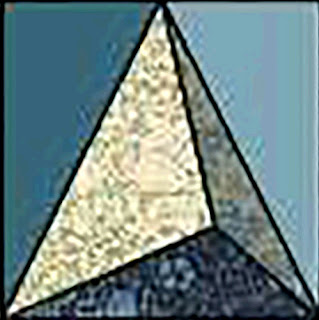An interesting repeat in a quilt from about 1900.
There's a place in the Encyclopedia of Pieced Quilt Patterns
and BlockBase+ for quilts pieced of triangular blocks. It's a small place with just a
few published patterns.
But not this one!
In fact there isn't one triangular block based on a half-square triangle proportion.
The few published patterns indexed there are based on other geometry...
Mathematically speaking: Equilateral Isoceles Triangles (Sierpinski's or Pascal's Triangles).
These are fascinating the way they tessellate. I've
been working on this one for Best of Morris fabrics....
That's not the point, however.
The missing patterns are Right Angle Isoceles triangles.
A whole class of quilt patterns adrift without identification.
This might very well be NOT MY FAULT!
The Encyclopedia is an index to published patterns and I'd guess these designs were not published in popular catalogs and magazines. Mainly because it's hard to show the repeat in a square box.
But I have pictures of quite a few, mostly pieced of small half-square triangles, mostly from online auctions and most of them look to be about 1900.
Schwenkfelder Library, Pennsylvania
look 1840-1860.
Minnesota Project & the Quilt Index
But back to one at the top of the page.
It's a variation with alternating triangles.
Sort of like an Irish Chain where the alternate block contains parts of the more complex blocks.
An Irish Chain--two blocks
So you would need two blocks
But wait a minute wouldn't it be easier to make this as a square block?
and just stack them up?
The block is not in the Encyclopedia either.
Pattern for a version at 12".



























I have a double Irish Chain quilt, summer spread, in which the blue squares on the white alternate block are hand applied. Perhaps the maker of the interesting quilt above hand appliqued the small triangles on the alternate blocks as well?
ReplyDeleteDifferent viewpoint: I think it's a hexagon pattern. Look at the repeating horizontal trios of navy-red-navy triangles (there are just a couple of places where a fugitive blue was used) - each of those is part of the top row of a pieced hexagon, with setting plain hexagons in a regular pattern.
ReplyDeleteLike an Ocean Waves block, but assembled differently.
Delete